Bahia Palace... the pearl of Marrakech and a mirror of authentic Moroccan art
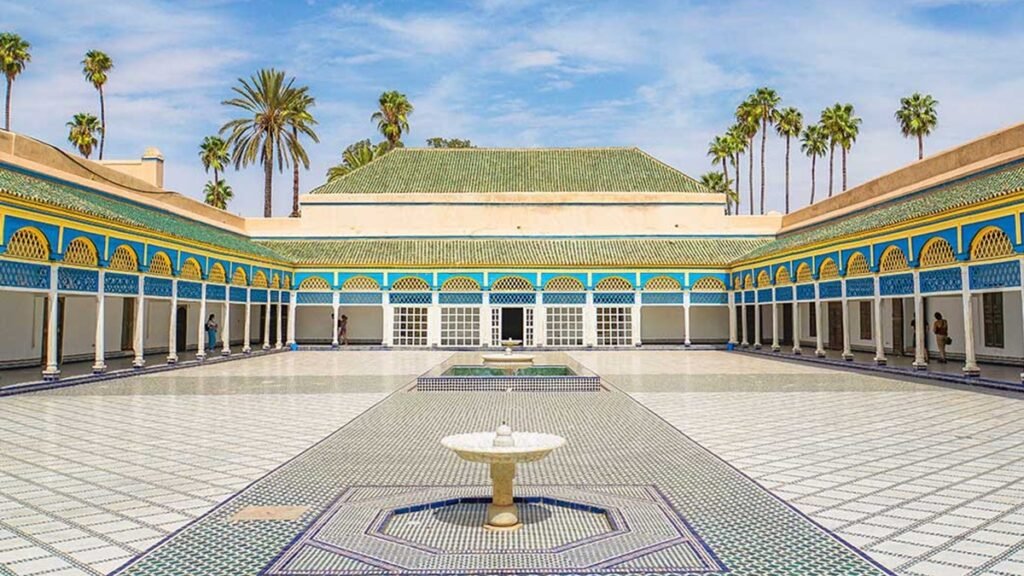
In the heart of the old city of Marrakech, where the scent of history blends with the fragrance of flowers emanating from its lush gardens, stands... Bahia Palace An architectural masterpiece that testifies to the ingenuity of Moroccan craftsmen and the splendor of Moroccan creativity in the late nineteenth century, it is not just a decorated stone building, but a living painting that embodies the genius of Moroccan art and Morocco's history, rich in grandeur and symbolism.
A touch of history
The construction of Bahia Palace dates back to The Alawite era In the time of the famous minister Ahmad ibn Musa, known as "Ba Hammad", one of the Sultan's most prominent men AbdulazizBa Hamad was a man of great ambition and refined taste, so he decided to build a palace that would embody his magnificence and power. He brought in the most skilled craftsmen and artisans from various cities in Morocco, from Fez and Meknes to Marrakesh, to work on the great project throughout Six consecutive years.
But fate did not allow him to see his masterpiece completed, as he passed away in 1900, before the work was completed. Nevertheless, the palace continued to fascinate subsequent generations with its captivating architecture and intricate decorations.
An architecture that dazzles the eye and captivates the heart
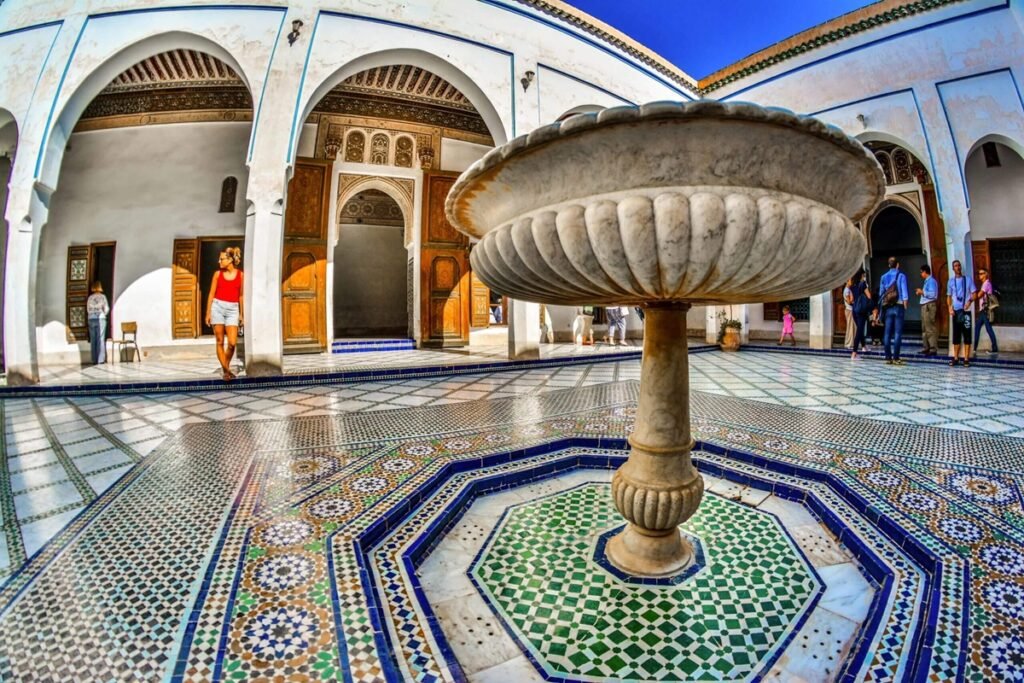
The palace consists of several wings, spacious halls, and lush gardens interspersed with pools and water tanks that add a sense of calm and tranquility to the place. Among the most famous of these pools are: Akdal Ba Hammad Cistern Which forms the heart of the main garden.
After the death of the minister, the palace became a destination for prominent political figures, who frequented it. Al-Madani Al-Kalawi andAl-Tahami Al-KalawiThen he settled there Al-Maqri Until 1912. With the advent of the French protectorate, the palace was transformed into a residence. French Resident-General Lyautey He added modern touches such as fireplaces and air conditioning, without losing the building's authentic spirit.
The original area of the palace is about 22 one thousand square metersHowever, it shrunk over time after some of the large gardens were separated from it. Its new entrance in Al-Malah neighborhood A witness to the modifications that took place in the palace in the early twentieth century.
Little Riyadh... the beating heart of the palace
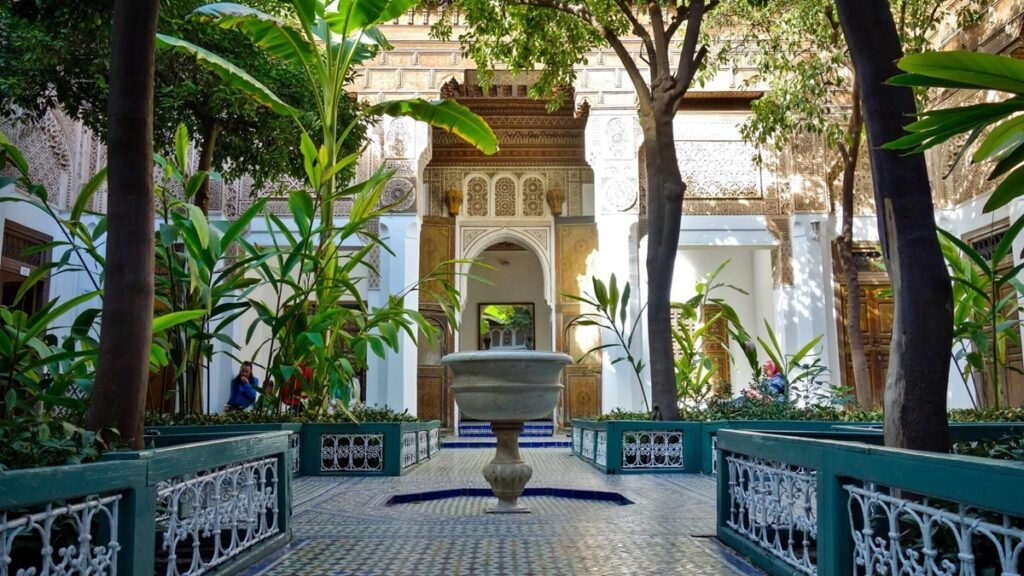
Among the palace's most charming wings, stands out: Little Riyadh This was the office of the minister, Ba Hammad, where he received his guests and managed state affairs. The design of this wing reflects the spirit of authentic Moroccan architecture in its fine details:
Elegant corridors decorated with brightly painted wooden friezes, marble and Fez-style tiles, and water basins with a fountain in the middle that sparkles in the Marrakesh sunlight.
Lyautey later used this space as a home and office, and it has remained a witness to the passage of time and the differences of eras.
In addition to the small garden, it is distributed large squares like Marble Square One of the palace's largest spaces, it is surrounded by 52 wooden columns, stunning in their precision and decoration. Today, it is used for concerts and art exhibitions, blending the fragrance of history with the spirit of modern art.
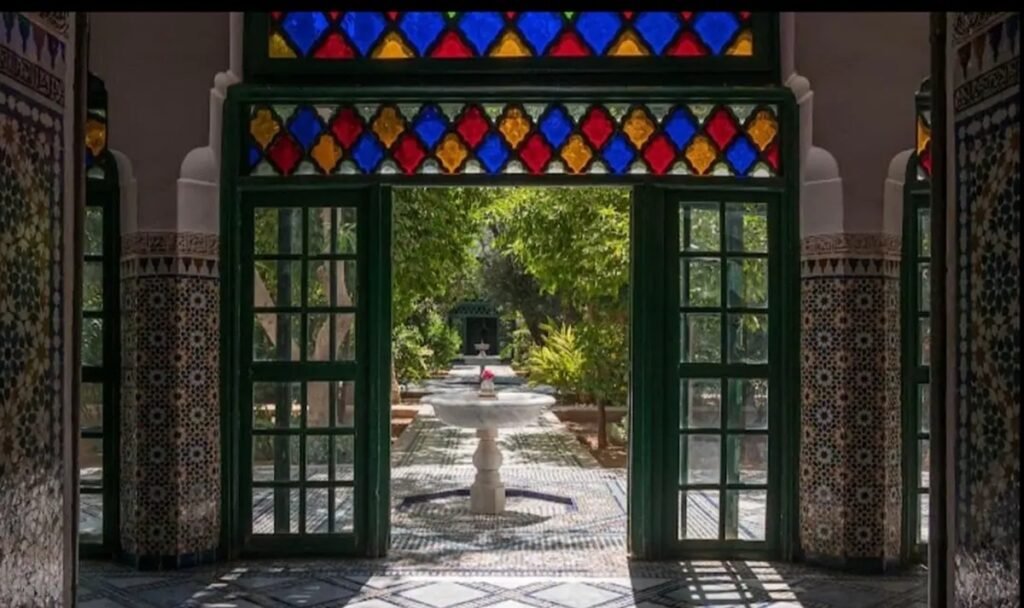
But North Hall It is a masterpiece in its own right, its walls covered in authentic Moroccan zellij, its windows overlooking an evergreen Andalusian garden, and its wooden ceiling decorated with unique Italian motifs, a rare blend of East and West that encapsulates the spirit of artistic openness that Marrakesh experienced at the time.
Grand Riyadh and Noble Pavilion
From the wide honorary courtyard, the visitor heads towards Grand Riyadh Through an ornately decorated hallway that dazzles the eyes. In this majestic wing we find North Great Hall It bears poetic verses engraved on plaster, chronicling its construction, while the southern hall contains decorations and ceilings that express the stages of architectural development in the palace.
But The noble wife's wingIt includes a closed courtyard and a magnificent wooden ceiling, surrounded by two halls with two opposite foyers, giving it a sense of privacy and elegance.
Every corner of Bahia Palace tells a story... the doors and windows are filled with meticulously carved floral and plant motifs, in what is known as "the art of afforestation," one of the finest Moroccan decorative arts that blends geometry with aesthetic symbolism.
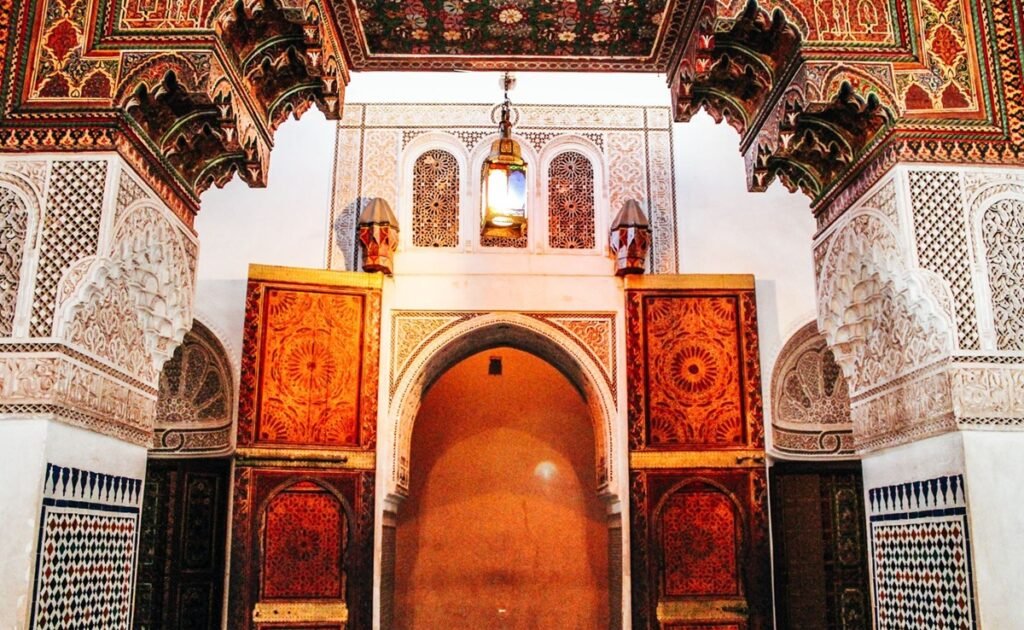
From a political palace to a global tourist attraction
Today, the Bahia Palace has been transformed into One of the most prominent tourist attractions in MarrakechThousands of visitors flock to it daily from all over the world to discover the secrets of traditional Moroccan architecture.
The palace was classified as National Historic Landmark For its exceptional artistic and historical value.
It is noteworthy that the design of the palace was supervised by the Moroccan engineer Muhammad ibn al-Makki al-Misawi...who learned the art of wood engraving in Meknes and the art of plaster in Fez, under the supervision of the French officer “Arkmane” before the period of the protectorate.
The first beginnings of building the palace were at the hands of Royal Chamberlain Musa ibn Ahmad al-Bukhari... who built the Grand Riad and the northern courtyard in 1886. After his death, his son, Ba Hammad, continued the construction of the palace, combining more than sixty houses to create a unique architectural masterpiece that embodies the pinnacle of Moroccan creativity in the late nineteenth century.
An immortal masterpiece
Today, Bahia Palace is considered A symbol of Morocco's rich history and diverse civilizationsIt combines the fragrance of the past with the spirit of the present, Andalusian motifs with authentic Moroccan touches, standing as a testament to the genius of Moroccans and their ability to transform stone and wood into timeless art.
And when you step into its illuminated corridors and hear the echo of footsteps between its zellij-covered walls, you realize that you are not in just a palace, but in A time journey through centuries of beauty, majesty and eternity.





